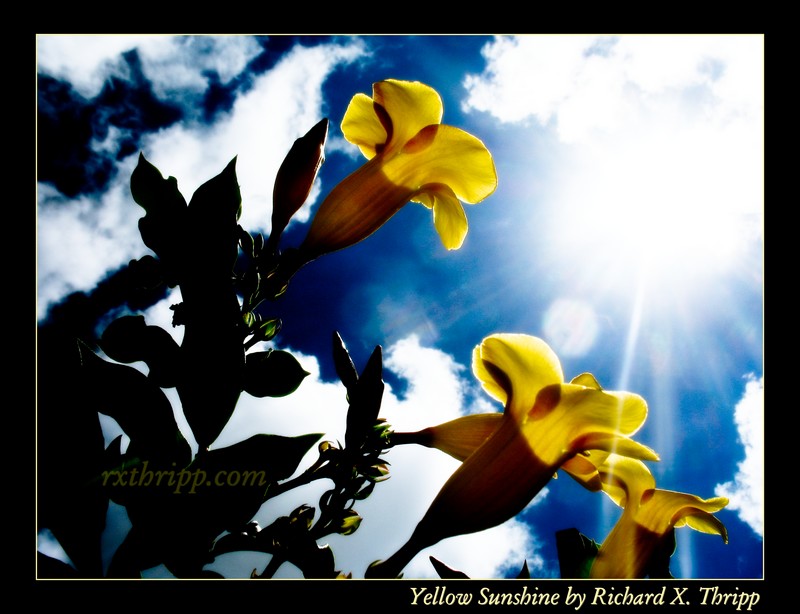The Sacrificial Pepper: An Analysis of Jimmy Santiago Baca’s “Green Chile.”
Essay by Richard X. Thripp.
2008-03-25 — http://richardxthripp.thripp.com/essays
PDF version (70 KB).
Jimmy Santiago Baca’s “Green Chile” is a poem of love and sacrifice, symbolized through two types of chile peppers. The author blandly states that his preference is for “red chile over my eggs / and potatoes for breakfast” (1-2), but his grandmother “loves green chile” (11), chopping one up with “mysterious passion on her face” (31). Baca says that “red chile ristras decorate my door, / dry on my roof, and hang from my eaves” (3-4), showing that the red-colored versions are used frequently as decorations, giving an “air of festive welcome” (7), yet they often go uneaten. His grandmother offers him the green variety “with beans and rice,” (34), which he calls “her sacrifice / to her little prince” (34-35). This makes green chile sound different, more sacred and mysterious, while red chile is not as special. The author shows us “a well-dressed gentleman at the door” (19), and then writes of his grandmother “rubbing its firmly glossed sides” (21), which is more like the description of a chile pepper than a man. Referring to “her little prince” (35) may be an allusion to the author, her grandson. The peppers take on a life of their own, in the grandmother and the author’s minds. They are “her sacrifice,” (34), perhaps meaning that she has given up her youth and ambitions to raise and protect her grandson and the rest of her family.
The green chiles are not Baca’s favorite, as when eating them, he says “my mouth burns / and I hiss and drink a tall glass of cold water” (37-38). However, he does not refuse them, evidently out of respect for his grandmother and the heritage that the peppers represent. He waxes philosophical of “sunburned men and women,” driving “rickety trucks stuffed with gunny sacks / of green chile,” selling them “for a dollar a bag,” it being a “beautiful ritual” (39-45). Despite his liking for the less spicy red peppers, he accepts green chiles because they are a traditional staple which his grandmother loves. This shows reciprocal sacrifice on his part; he eats the food of his forefathers to please his grandmother, despite the uncomfortable burning in his mouth.
To the author, red chiles represent strength and history, while his grandmother prefers green chiles for their youth and passion. Baca talks of the red pepper’s “historical grandeur” (6), being like “haggard, yellowing, crisp, rasping tongues of old men, licking the breeze” (9-10). Here, he is likening the red chiles to wise elders, who recount riveting tales of their livid past. Conversely, the green chile is “voluptuous, masculine” (15), having “authority and youth” (16). We know that the color red is often associated with love and passion (as with red roses), so it is counter-intuitive that the colors are flipped with the chiles. However, green chiles are unripe like green bananas; they ripen and change colors, turning red, after which they are normally dried and preserved. They must be cooked or frozen quickly, so they are a regional specialty. This goes along with the grandmother’s fascination with them; their “air of authority and youth” (16) comes from them literally being younger than red chiles.
The elderly grandmother prefers produce representing sensuality and passion, while the youthful grandson prefers the pepper of tradition and formality; however, it is more usual to associate tradition with the aged. We see that the green chile is like a fiery young lover to the grandmother, as she compares it to “a well-dressed gentleman at the door,” whom she “takes sensuously in her hand,” “caressing the oily rubber serpent, / with mouth-watering fulfillment, / fondling its curves with gentle fingers” (19-24). Descriptors like “caressing” and “fondling” are apt for romantic love, not a common vegetable. However, here the green chile is a metaphor for the grandmother’s passionate love, though it may be unfulfilled. If the pepper is a person then he is soon killed, as “she thrusts her blade into [the green chile] / and cuts it open, with lust / on her hot mouth” (27-29). This shows that her lover must be sacrificed for the benefit of her grandson, and it becomes the part of a glorious meal, as Baca illustrates: “she serves me green chile con carne / between soft warm leaves of corn tortillas / with beans and rice—her sacrifice” (32-34), going along with her forfeiting her passions for familial obligations.
The chiles are an “old, beautiful ritual,” to be relived “again and again.” What does this mean? We can clearly see that the vegetables are an important part of New Mexican tradition, and so this is why they are deserving of a poem. It also represents the untiring effort that the New Mexican workers and farmers put into their chiles, as “you see them roasting green chile / in screen-sided homemade barrels” (43-44). The barrels are made carefully by hand, yet the chiles fetch a paltry “dollar a bag” (44). However, this keeps them accessible to even the poor, and shows sacrifice on the part of the workers. It is curious that Baca shows little emotion in the last stanza, despite his vivid depiction of his grandmother’s preparation of the green chile, but I take it as a sweeping demonstration of recognition and respect for the ritual of the chile peppers. In forty-five eloquent lines, we are shown that food is love and love is sacrifice. Baca makes these connections beautifully; while the subject is common, the message is unique.
Work Cited
Baca, Jimmy Santiago. “Green Chile.” Jimmy Santiago Baca: Poetry, Writing, Chicano Literature. 25 Mar. 2008 <http://www.jimmysantiagobaca.com/greenchile.html>.








